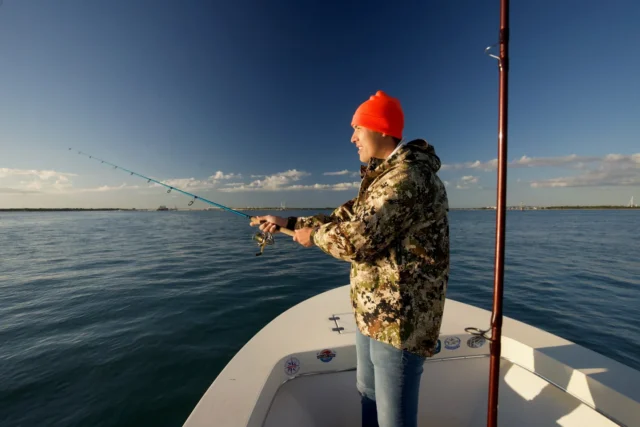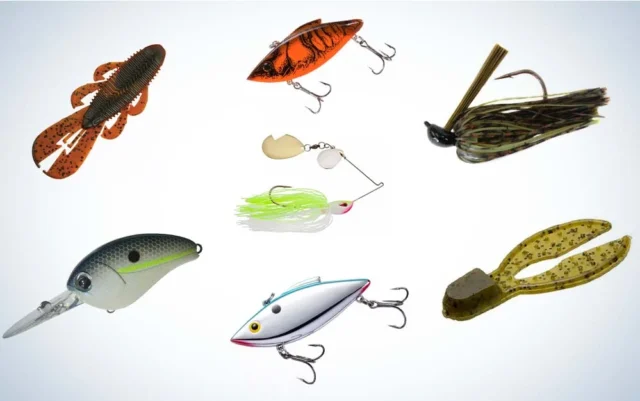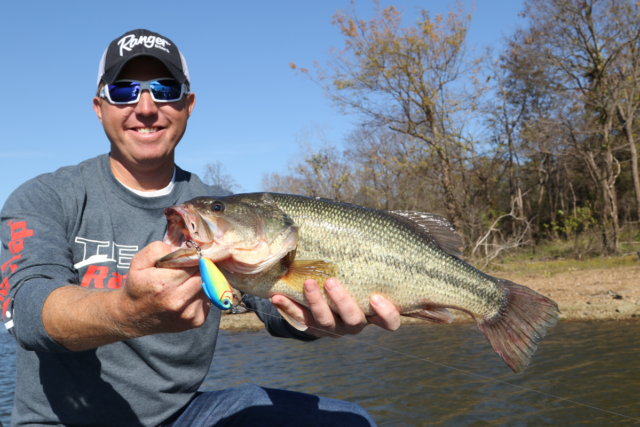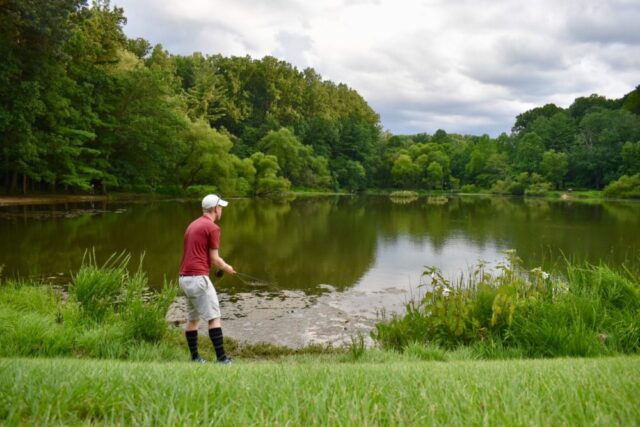
Catching a bass is a goal for many anglers who have just started their adventure with fishing. However, you may quickly notice that it is a challenging task. You might want to know some professional tips which can help you to catch your first bass.
Rods, Reels, and Lines for Beginners
For the best rod and reel combo for bass, you need to have the right line, which can improve your fishing experience. A line recommended for beginners who use a spinning reel is 6-10 lb of monofilament or fluorocarbon. Anglers who prefer a baitcasting reel should choose a line of 10-20 lb. Remember that while monofilament lines are the cheapest, fluorocarbon ones are the clearest.
Choose the Right Lures for Bass Fishing

On the market, you can find endless options for bass lures. Thanks to this, you can catch bass in various environments while using the right lure. As a beginner, you can start off with minimal fishing tackle.
Remember that bass are interested in minnows, crawfish, frogs, and bugs. If you want to succeed and catch a bass, you need to find lures that resemble those creatures.
You can also use moving baits, for example, spinnerbaits, swimbaits, or crankbaits. You need to constantly move them to show the motion to the fish. They are usually shaped like small fish and can help you make an aggressive fish strike more quickly.
If you need a lure that will be close to the bottom, choose one in the shape of creatures that creep along the bottom, such as bugs or crawfish. Popular slower-moving baits that are perfect for catching a fish near the bottom are jigs, ned rigs, and drop shot rigs.
Another type of lure that is good for catching bass is topwater bait. A bass can strike at it, thinking it’s a small fish or frog that hangs on the surface of the water. These lures are great to use in open water and when you are targeting a bass in shallow grass.
While trying to catch a bass, you can also reach for soft plastics. These types of bait are hookless and made of soft plastic. You can combine them with jigs, hooks, or weights and create your own bass rig. Because of their endless rigging capabilities and natural movement in the water, soft plastic baits are the most common choice while fishing for bass.
Pay Attention to the Calendar

Bass behavior, including their moods, aggressiveness, and habits, are highly impacted by weather conditions. They spawn in spring when the temperature of the water is above 60 degrees of Fahrenheit. At that time of the year, you can find them in shallow water and expect them to feed aggressively.
After breeding, basses’ behavior changes. When the warmer weather comes, their metabolism speeds up, which means they are hungrier. Because of that, summer is the time when catching bass is the easiest.
Where to Find Bass

Bass is a very common and popular fish. You can find them in ponds, rivers, lakes, or even creeks in 49 US states. They are very adaptable, which makes them thrive in various conditions and environments. If you are fishing in the United States, you can reach out to local fishing clubs or state websites to get more information on where you can catch bass in your area.
Smallmouth bass is native to New England and the Midwest, but you can also find them in some states in the south and west. In the southeast and parts of the midwest, you can fish for spotted bass. Some of the best spots to catch spotted bass are select trophy lakes in North Carolina and the Coosa River (Alabama).
Bass in Ponds
In many of the ponds in the United States and Canada, you can find largemouth bass. When trying to catch a bass in a pond, opt for minnows, bugs, or crawfish as lures. The smaller the pond, the bigger your chance of getting a bass can be.
Bass in Creeks and Rivers
Bass live in all types of creeks and rivers, from very narrow ones to others as wide as the Mississippi River. However, depending on where exactly you are going to fish, you might get smallmouth, spotted, or largemouth bass (or more than one type).
Some of the places you should explore while looking for bass are current breaks, inflowing water, below dams, channel swings, and deep water.
Bass Fishing Lakes & Reservoirs
You can find a big population of bass in US lakes and reservoirs. They live there naturally, but in many places, basses were added to increase the population. Larger lakes host the biggest bass populations in the country.
Extra Tips

Bass are most active during dawn and dusk, so if you want to increase the chance of catching them, fish around that time.
Try to find a spot and time where there are fewer anglers. That might increase your chances to succeed, as the more people fish, the more trained the fish become, and they might not be as easily fooled with your lures. If you have to choose a body of water where many anglers fish, try to be creative and do what you can to make your lures look as natural as possible.
Have you noticed some movement around your bait? Act on it! It doesn’t cost you anything, and there is a chance that you just got a shy bass who bit very subtly.
Summary
Bass is a very common fish that can be found in various bodies of water. It requires a bit of patience and knowledge to catch one. Always set the right reel, rod, and line combo, and use the right lure, considering the place you are fishing.
If you want to increase your chances, pick a place that is not too crowded with anglers, and aim to fish at dawn and dusk, if possible, in summer, when basses are the most hungry.












